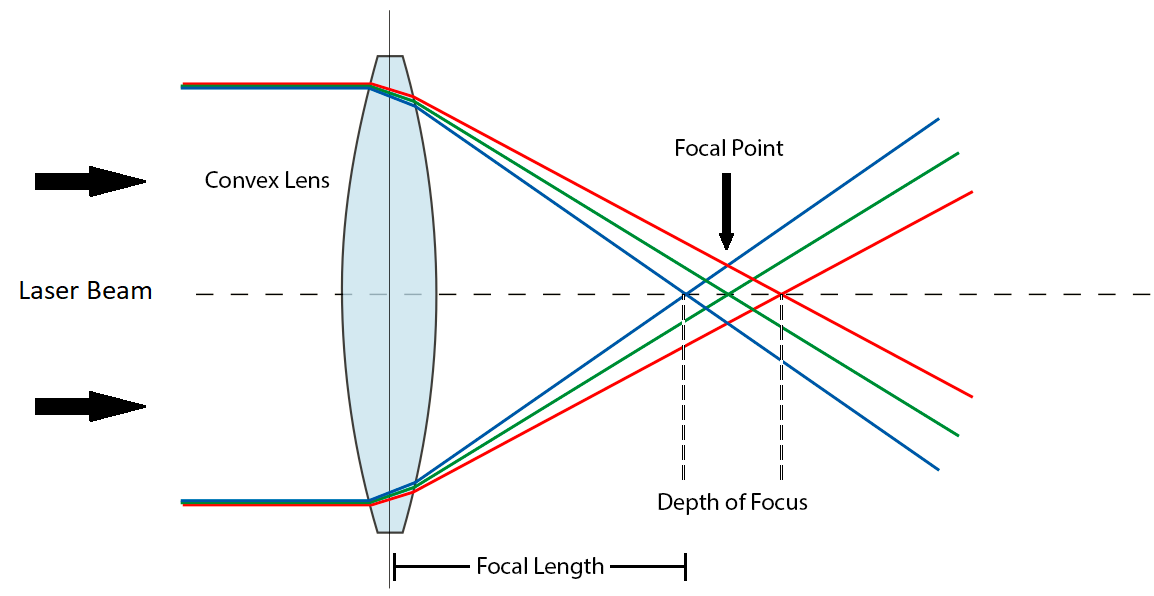How to choose the correct CO2 focusing lens for my application?
What does a focus lens do?
Laser cutting and engraving machines use a laser beam with a diameter around one-quarter of an inch (240 thousandths). In order to achieve high-quality engraving and precise cutting, the laser beam uses a system of mirrors and focus lens that redirect the laser.
Laser systems use plano-convex lenses to focus laser light. Laser light enters a convex lens and begins to converge to a focal point, upon crossing the focal point, the light then diverges out again.
This focus converts the laser beam into a very small and precise spot with extremely accurate results for a wide variety of applications. As the laser beam leaves the focus lens, being positioned in the ideal focal distance, it starts to make the cut or engrave, as it is showed below:

The focus tolerance (depth of focus) is the area in which the beam has the smallest diameter. The larger the lens the longer the focal tolerance. This is especially important if you want to cut through thick materials in which case you will need a larger lens. The shorter the lens focal length, the more quickly it will converge/diverge, the smaller the focal spot will be and the shorter the depth of focus will be.
As the focal spot gets smaller, sharper details are seen in the laser image that is processed, producing a brighter and more detailed image.
Which focus lenses work best on which types of projects?
BesCutter CO2 laser systems are typically equipped with one standard 2.5’’ focal lens for all the CO2 systems manufactured, but it can change depending on the application. The most common laser lenses are 1.5’’, 2’’, 2.5’’ and 4’’. All of the lenses are suitable for both cutting and engraving works.
What is the best lens for my application?
1.5-inch lens:
- High resolution engraving.
- Best for thin (less than 1/16 inch) materials.
- Small font or very fine detail engraving.
- About 40% smaller than the 2.0 inch focusing lens.
- About 38.5mm of thickness, for very thin materials.


2.5-inch lens:
- Most common used for laser systems.
- Multipurpose for both, engraving and cutting applications.
- Graphics with medium detail and resolution.
- About 63.5mm of thickness, for majority of works.

4-inch lens:
- Used for longer vertical distance.
- Used for cutting thick materials.
- About 101.6mm of thickness, for very thick materials.

As an important conclusion you can see that the more delicate and detailed the graphics are, the smaller the lens should be. For cutting thick materials, lenses of maximum size are recommended.
Important considerations
The lens you need is directly related to your application. These are some important considerations that will define the lens you must use:
- Output of your laser device (laser beam wattage).
- Material and purpose (cutting or engraving).
- Detail level of the graphics.
- Thickness of the material.
